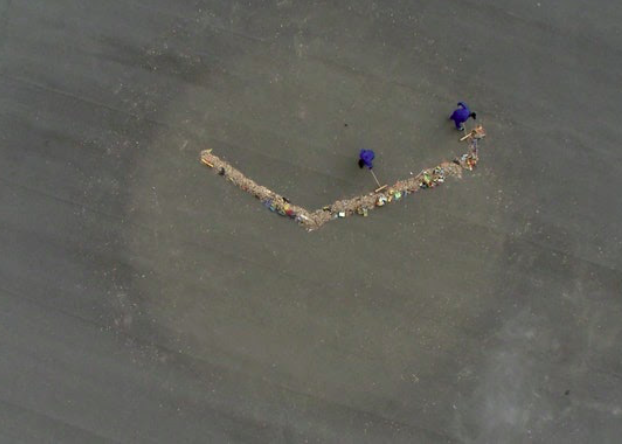Written by Audrey Goodman
Loop is a completely virtual art exhibit, uniquely featuring only digital pieces of art, found in Transylvania University’s Morlan Gallery. The completely online aspect of Loop is significant in two ways; of course part of it, because COVID-19 remains a serious threat to the population, but also during the continuously extending quarantine, many people have found solace in social media and other digital landscapes when face-to-face communication isn’t available. Coming up on the one-year anniversary of quarantine beginning, society has had quite some time to fall into new habits and find new perspectives of life. In these new times, it has become even more apparent that life is just a series of loops in the form of “short habitual repetitions in our daily lives…and through our memories where we reflect on or long for what was” as the Loop exhibit statement lays out.
Featured right at the top of the gallery is an art piece mimicking the face of a clock created by Maarten Baas. Clicking on the piece leads the viewer to a page about the art piece, called Sweeper’s Clock, originally revealed in Italy in 2009 as part of Baas’s Real Time series. This work is perhaps the most labor-intensive piece Baas has created and combines art, film, design, and theater. Sweeper’s Clock is a twelve hour film, though only a ten minute excerpt can be found in the gallery. This artwork features two identical handymen sweepers in bright blue coveralls and black caps with wide brooms on dark grey concrete. Part of the ground around them has a lighter circle which forms the face of the ‘clock’. The handymen sweep a line of trash around a pivot point to create the two hands of a clock, one of the handymen stops every once in a while to make sure the line is straight by looking down the line from the pivot point. The trash they sweep is mostly a brown color with some brighter red, blue, yellow, green, and white pieces mixed throughout the lines though no details or logos can be seen. Every minute, the handymen sweep the trash lines to a new spot, effectively keeping track of the passage of time.
Sweeper’s Clock is a very neutral piece of artwork, someone could sit for hours and watch the handymen manually move the hands of the clock. The viewer has no control over the artwork, other than speeding up or slowing down the video and causing the clock to be off time. The sweepers do not express emotion, we can never see their faces, though one can expect 12 hours of manual labor to be taxing. Perhaps this provokes ideas of someone working their whole life away just for someone ‘higher’, such as the viewer watching from a camera far above them. The entire piece is 12 hours long, looping around to create a whole day’s worth of time telling, but the viewer may only watch them sweep for a couple of minutes, a mere fraction of their time spent on the job. The Art Institute of Chicago finds Sweeper’s Clock to be laced with dry wit and draws the viewer’s attention to “how the perception of time is dictated by regularly occurring activities, as well as to the fruitlessness of hard labor.”
Baas is more commonly known for his furniture designs. One of his most famous series is Smoke, where Baas charcoals pieces of furniture and then covers them with epoxy to make them usable again. In her presentation on Baas’s work in design, Marina Schultz states that the philosophy in Smoke revolves around the exchange between man and nature, specifically time and the nature of change. She states that ‘time is regarded as a tedious factor and not an extra dimension. So, we don’t often see any value in the process of change.’ This ties perfectly with Sweeper’s Clock and the man-made passage of time it creates. It is certainly a tedious process for the handymen to sweep trash in perfectly straight lines for twelve hours with very little progress seen when viewed in real-time.
Sweeper’s Clock really exemplifies the overall theme of Loop. What better describes a loop than the passage of time? Every day, the clock restarts and counts down the hours until the next restart with no interruptions; for time, in its essence, is a perfect loop.





